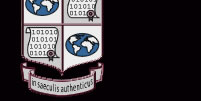Project Overview
Digital records and the applications that generate them have affected every aspect of business, research, government and domestic life. Email, e-voting ballots, research and survey data, financial company records, and digital art are just some of the materials used in the day-to-day operation of modern society. The keepers of these records need to maintain them in a way that their reliability, accuracy and authenticity can be demonstrated at any time to support, for example, research and innovation, legal validation, copyright and patent litigation, scientific discovery, issues of ownership and precedence for governments and individuals, and accountability. Long-term authentic preservation also needs to be a primary concern, firstly, because generations of digital material have already been lost due to changing technology and inadequate preservation practices, and secondly, because the authenticity of digital materials that have survived is currently difficult, if not impossible, to prove.
These issues have been addressed by several research projects which have developed knowledge essential to the long-term preservation of authentic records created and/or maintained in digital form, thereby providing the basis from which model policies, strategies and standards capable of ensuring the longevity of digital material and the ability of its users to trust its authenticity have been formulated. However, a key finding of the most comprehensive of these projects, InterPARES, is that, although the body of concepts, principles and methods developed through scientific research constitutes the essential foundation and framework of best practices, any solution to digital preservation problems is situation specific, and must be devised by preservers taking into account: a) the cultural, administrative, legal, and functional context in which they operate, b) the nature and characteristics of the organizations producing the digital material to be preserved, c) the typology of the material produced and its documentary and technological features, d) the limitations imposed by the available financial and human resources, e) the organizational culture of both the producer of the material and the preserver, and g) access to educated professionals or educational programs and resources. Furthermore, while the conceptual and methodological findings of InterPARES and other research projects are equally applicable to larger and smaller organizations and programs, archives with limited resources, which often have the greatest need for assistance, will find the outcomes of the research difficult to apply without specific directions on how to move forward.
InterPARES 3 will translate the theory and methods of digital preservation drawn from research to date into concrete action plans for existing bodies of records that are to be kept over the long term by archives and archival/records units within organizations endowed with limited resources. In the process, detailed knowledge will be developed on (1) how general theory and methods can be implemented in small and medium sized archives and units and become effective practices; (2) what factors determine the type of implementation that is appropriate for each body of records in each context; and (3) what skills professionals will require to conduct such operations. On this basis, teaching modules will be developed for in-house training programs, continuing education workshops, and academic curricula that will provide professionals with the competence not only to preserve over the long term society's documentary heritage in digital form, but also to ensure the accountability of organizations and institutions through the protection of the accuracy and authenticity of the digital information they produce.
Governance, law, art, science and scholarship urgently require concrete plans for the preservation of digital materials, so that today’s actions, thoughts, achievements and creations will have a future and the future will have a memory.
|



